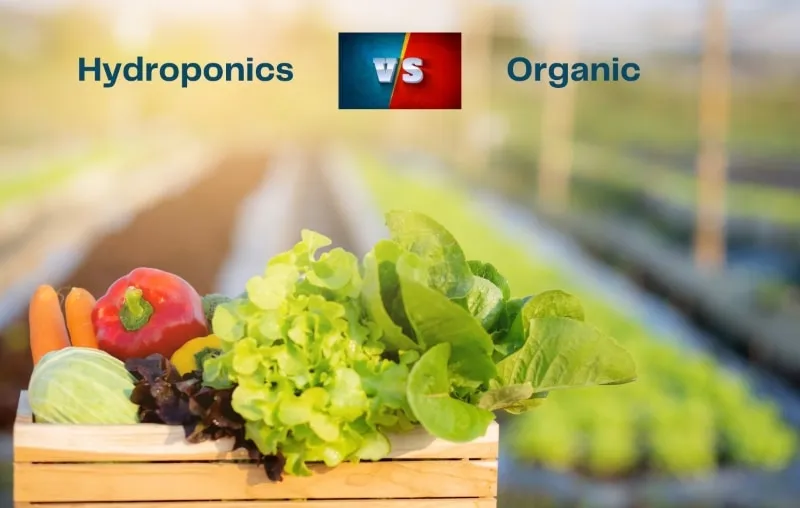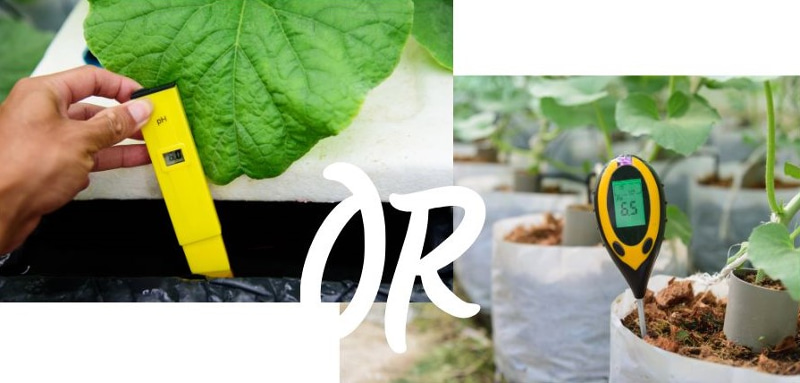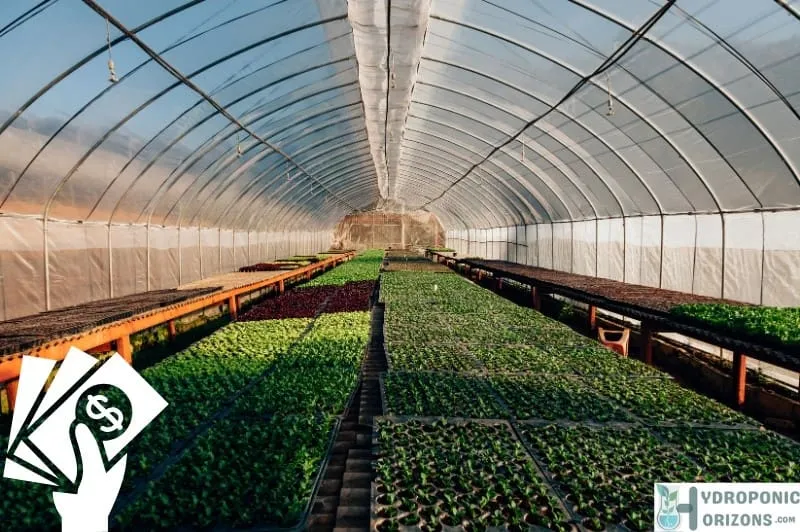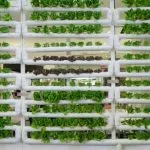Are you looking to start a hydroponic farm and wondering which crops will bring you the best return on investment? Choosing the right crops to grow is essential for a successful and profitable hydroponic farming venture. In this article, we will discuss some of the most profitable hydroponic crops that are not only high in demand but also relatively easy to grow.
Hydroponic farming is a popular method of growing plants without soil, providing optimal nutrient conditions for them to thrive. With hydroponics, you can grow a variety of crops efficiently, saving both time and resources. However, the profitability of your farm depends on several factors, including the types of crops you choose to grow, their market value, and your ability to grow them effectively.
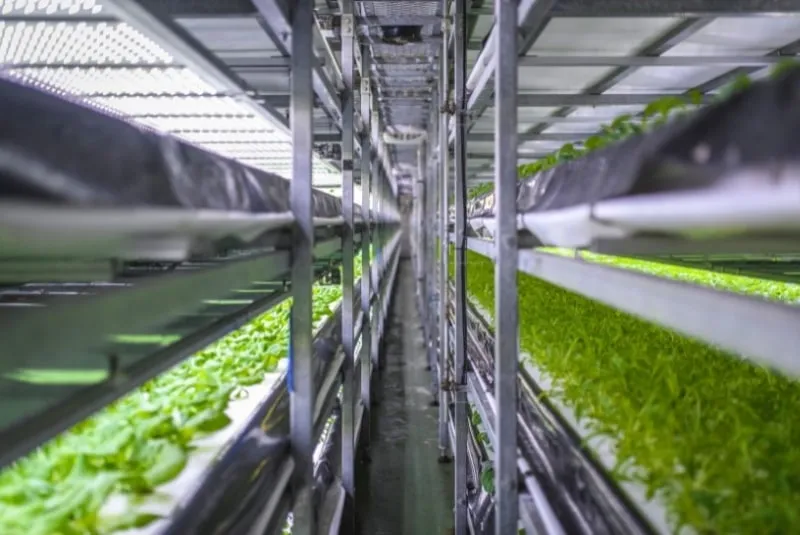
Some of the top profitable hydroponic crops include lettuce, chives, cilantro, basil, and ginseng. These plants not only offer good economic returns but are also well-suited for hydroponic growing environments. So, as you embark on your hydroponic farming journey, keep these crops in mind to get the most out of your efforts and investments.
Most Profitable Hydroponic Crops
Lettuce
Lettuce is one of the best hydroponic crops for profit due to its ease of growth and low costs. You can grow lettuce quickly, with low light levels, and pack them into small spaces. This allows you to maximize your yield while reducing the time and resources required.
Herbs
Hydroponics is an excellent method for growing various herbs, some of which are highly profitable. A few examples of profitable herbs include:
- Basil
- Mint
- Cilantro
- Chives
- Dill
These herbs are popular for their culinary and medicinal uses, making them in high demand.
Tomatoes
Tomatoes are a popular choice for hydroponic farming due to their fast growth and high yields. By controlling the nutrients, light, and temperature in your hydroponic system, you can achieve desirable results without the need for traditional soil. This can lead to increased profits for your hydroponic farming business.
Strawberries
Strawberries are another crop that can be grown hydroponically with success. They benefit from the controlled environment, leading to consistent yields and high-quality fruit. By taking advantage of hydroponic technology, you can produce strawberries year-round, providing a steady income for your business.
Peppers
Bell peppers are a common hydroponic crop, mainly due to the controlled environment’s benefits for their growth. When grown hydroponically, bell peppers can achieve higher yields and better quality than traditional soil. Additionally, you can grow various types of peppers, including hot varieties.

Microgreens
Microgreens are a very profitable hydroponic crop since they don’t require high-intensity lighting. You can quickly grow microgreens using fluorescent lights, and they are ready for harvest within two weeks. Demand for microgreens is high in specialty food markets and fine dining establishments, making them a viable option for boosting your hydroponic farm’s profitability.
Hydroponic Systems and Techniques
Nutrient Film Technique
The Nutrient Film Technique (NFT) is a popular hydroponic system that you can use to grow your most profitable crops. In this system, plants are placed in a grow tray with a slight angle, allowing a thin film of nutrient solution to flow over the roots continuously. This method ensures that your plants receive an optimal balance of oxygen, water, and nutrients.
Benefits of the Nutrient Film Technique for growing hydroponic crops:
- Efficient use of water and nutrient solution
- Easier to control the environment for plant growth
- Faster plant growth and higher yields compared to traditional soil cultivation
To set up your NFT system, follow these steps:
- Set up a reservoir filled with the mineral-laden nutrient solution.
- Install a water pump that will deliver the solution to the top of the grow tray.
- Arrange your plants in the grow tray, allowing enough space for root growth.
- Monitor the pH and nutrient levels to ensure a healthy environment for your plants.
Water Culture
Another option for growing hydroponic crops is the water culture system, also known as deep-water culture or floating raft system. In this method, plants are suspended in a floating raft with their roots directly immersed in the mineral nutrient solution. This technique allows your plants to have easy access to both nutrients and oxygen.
Benefits of the Water Culture system for growing hydroponic crops:
- Simple and cost-effective setup
- Excellent nutrition uptake
- Ability to grow a large number of plants in a small area
To set up your water culture system, follow these steps:
- Fill a container with the mineral-laden nutrient solution, ensuring the depth is sufficient for root growth.
- Place a floating raft (made of materials like polystyrene) on top of the nutrient solution.
- Insert your plants into pre-made holes in the raft, allowing the roots to be submerged in the solution.
- Attach an air pump and airstones to provide a constant supply of oxygen for your plants.
By choosing the right hydroponic system and technique for your crops, you can make the most of your space and resources, ultimately increasing the profitability of your farm.
Related: How does an aeroponic tower garden work? Find out now!
Growing Conditions and Requirements
Sunlight and Climate Control
In hydroponic gardening, providing optimal sunlight and controlling climate are essential factors for plant growth. When choosing a location for your outdoor hydroponic garden, it’s essential to consider the amount of natural sunlight your plants will receive. Most plants require a minimum of 6-hours of sunlight per day, while some may even need up to 16-hours.
If you don’t have access to natural sunlight, artificial lighting can be employed, although this will be an added expense that you should take into account when considering plant profitability. Utilizing grow lights or LED lights will help mimic the natural spectrum of the sun required for the healthy growth of your plants. Make sure to control the light exposure to maintain a consistent day and night cycle. If you want to grow indoors, herbs and greens are the most profitable indoor hydroponic crops.
Maintaining a controlled climate for your hydroponic crops is crucial. Factors such as temperature, humidity, and airflow must be monitored and adjusted accordingly. Keep the temperature within the range of 65-75°F for a majority of plants, while herbs and lettuce may require slightly cooler temperatures, around 60-70°F.

Nutrients and Water Quality
Hydroponic gardening relies on nutrient-rich water solutions, which provide the plant’s essential nutrients directly. Regularly monitoring your nutrient solution is key to ensure your plants receive the required nourishment. The ideal pH level for most hydroponic gardens is between 5.5 and 6.5. Investing in a digital pH meter can help you maintain optimal nutrient levels.
The following are some important nutrients to include in your hydroponic system:
- Nitrogen
- Phosphorus
- Potassium
- Calcium
- Magnesium
- Sulfur
- Iron
- Manganese
- Copper
- Zinc
- Boron
- Molybdenum
Water quality is another significant aspect of successful hydroponic gardening. Using filtered or purified water is recommended, as tap water may contain high levels of minerals, which could impact your nutrient balance. Additionally, ensure that the water used in your hydroponic system is free from pathogens. Therefore, the cost of the water purification system should be taken into account.
By carefully managing the sunlight, climate, nutrients, and water quality in your hydroponic garden, you can expect to see healthy growth and bountiful yields from your chosen hydroponic crops.
Yield and Profitability Factors
High-Yield Crops
When growing hydroponic crops, it’s essential to focus on high-yielding plants to maximize your revenue. Some examples of high-yield hydroponic crops include lettuce, tomatoes, and cucumbers. These vegetables tend to produce large quantities per plant, which directly contributes to your profitability.
- Lettuce: A popular choice due to its ease of growth and low cost, making it an excellent candidate for hydroponic systems.
- Tomatoes: Known for their high yields and short harvesting times, tomatoes can be a great addition to your hydroponic garden.
- Cucumbers: Similar to tomatoes, cucumbers offer high yields and quick harvesting times, contributing to their profitability.
Market Demand
Understanding market demand for your hydroponic crops is crucial to ensure profitability. You want to grow plants that have both high yields and high demand in the market. Here are a few examples of plants with strong market demand:
- Microgreens: These nutrient-packed greens have become increasingly popular in the culinary world, and their affordability makes them well-suited to hydroponic systems. Expect a forecasted worth of $3,695 million by 2030 at an 11% CAGR in the US alone.
- Chives: Often priced around $14.00 per pound when sold fresh, chives are not only a profitable crop, but they also act as a natural insect repellent. The chives market is projected to have the highest future growth rate among herbs, at 4.9%.
- Ginseng: This valuable herb has various uses, including traditional medicine and culinary applications, contributing to a significant market demand. In 2022, the total value of the worldwide ginseng market was estimated at $679.90 million. At a CAGR of 4.6% between 2023 and 2031, it is expected to reach $1019.13 million that year.
In addition to selecting high-yield crops and plants with strong market demand, conducting regular market analysis is essential to stay informed on current trends and adjust your hydroponic crop selection accordingly. This will help you maintain a successful hydroponic business and ensure a steady stream of revenue. Remember to always base your decisions on accurate data, and avoid making exaggerated or false claims to provide the best service and products to your customers.
Initial Costs and Operational Expenses
Setup and Equipment
When starting a hydroponic farm, you need to invest in the initial costs for setup and equipment. Your greenhouse or grow room, which is essential for controlling the growing environment, will require materials such as the frame, glazing, and a ventilation system. For your hydroponic system, you’ll need to purchase items like nutrient solution, grow lights, reservoir, and a pump. Keep in mind that these initial costs can vary greatly depending on the scale, complexity, and efficiency of your setup.
Energy costs, especially for hydroponic lettuce that uses LED lighting units, can accumulate, with daily energy usage reaching 306.72 kWh. It’s essential to consider both commercial and residential costs, as they can differ substantially.
- Greenhouse materials: frame, glazing, ventilation system
- Hydroponic system components: nutrient solution, grow lights, reservoir, pump
- Variable energy costs: influenced by scale, complexity, and efficiency
Labor and Maintenance Costs
Apart from the initial setup, labor and maintenance costs play a role in the overall operational expenses for hydroponic gardeners. Growing hydroponic crops can be labor-intensive, although not as much as traditional soil growing, with tasks like planting, harvesting, cleaning, and maintaining the system. If you’re running a small-scale farm, you may be able to handle these tasks yourself. However, for larger operations, hiring employees becomes necessary.
Maintenance costs also add to the operational expenses of a hydroponic farm. Regular upkeep of the greenhouse structure, hydroponic system, and plants themselves are essential to ensure the crops grow well and prevent issues from arising. Factors like replacing grow lights, replenishing nutrient solutions, and adjusting the pH of the water are all part of the ongoing expenses.
In short, it’s important to keep in mind the following aspects when considering labor and maintenance costs:
- Labor-intensive tasks: planting, harvesting, cleaning, and system maintenance
- Potential need for employees in larger operations
- Regular upkeep of greenhouse structure and hydroponic equipment
With careful planning and consideration of all these factors, you can successfully navigate the initial costs and operational expenses of hydroponic farming while maximizing the profitability of your crops.
Alternative Hydroponic Crop Options
As you explore hydroponic farming, it’s essential to consider various crops that have the potential for high profits. In this section, we’ll give you some alternative hydroponic crop options divided into two main subcategories: fruits and vegetables, and flowers and ornamentals.
Fruits and Vegetables
Your hydroponic farm can tap into the growing demand for fresh, organic fruits and vegetables. Here are some profitable options if you’re considering selling hydroponic vegetables and fruits:
- Leafy greens: Leafy greens like lettuce, spinach, and kale thrive in hydroponic systems. They have a quick growth cycle and attract health-conscious consumers. For example, lettuce is considered one of the most profitable hydroponic vegetables and can yield impressive returns when properly managed.
- Cucumbers: Cucumbers are another profitable option for your hydroponic farm, especially when grown in vertical systems, which maximize space utilization. They have a high water content and adapt well to hydroponic setups.
- Fruits: Fruits like strawberries and tomatoes offer profitable opportunities. These crops not only taste great, but they’re also sought after by consumers looking for fresh, pesticide-free produce.
Flowers and Ornamentals

You should definitely consider growing hydroponic flowers for profit. Flowers and ornamental plants have a higher value in the market, making them a profitable venture for hydroponic farms. Here are some attractive options:
- Daisies: Daisies are not only visually appealing, but they can grow and thrive in hydroponic greenhouses. They have a quick growth cycle and fetch good prices in the market.
- Orchids: There are between 20,000 and 30,000 different types of orchids, each one a little bit different than the last, which is one reason for their high commercial appeal. The vast majority of orchid species are epiphytes, meaning their roots develop in the air rather than the soil, making aeroponics a preferable growing method. However, their roots need high humidity levels for growth.
- Tulips: Growers of cut flowers see tulips as a lucrative crop because of how well they do in hydroponic systems. The Dutch bulb industry has discovered that flower bulbs are among the most lucrative crops.
Your hydroponic farming venture can make the most out of these alternative crop options. Just remember that factors such as your location, available space, and target market should also be considered when selecting which crops to grow.
Growing Hydroponic Crops on a Large Scale
As you venture into large-scale hydroponic crop production, there are several essential factors to consider. In this section, we will discuss indoor vertical farming and land and acreage requirements for growing hydroponic crops.
Indoor Vertical Farming
Indoor vertical farming is an innovative approach to producing food in urban centers. It offers a sustainable solution for feeding the growing global population while efficiently utilizing precious land resources. When you embark on an indoor vertical farming project, you make it possible to grow a variety of profitable hydroponic crops such as lettuce, microgreens, and shiso, all within a controlled environment.
With this approach, you can optimize factors such as lighting, humidity, and temperature, ensuring ideal growing conditions for your crops. This optimization boosts growth rates and minimizes issues like pests and diseases, allowing you to produce a healthier, more abundant yield.
Land and Acreage Requirements
One of the benefits of hydroponic farming is its ability to grow crops on smaller land areas compared to traditional horticulture. To determine the acreage you’ll need for your hydroponic farm, consider the following factors:
- Type of crop: Hydroponic crops vary in size, space requirements, and growth patterns. Some crops like lettuce and microgreens have relatively low space requirements, while others, such as tomatoes or cucumbers, generally need more room to grow.
- Production levels: Your desired production volume will also affect the land required. The larger the volume of crops you intend to produce, the more acreage you will need.
- Farm infrastructure: Besides the actual planting area, you’ll need space for your farm’s infrastructure, such as greenhouses, water storage tanks, and processing facilities.
In conclusion, when growing hydroponic crops on a large scale, it’s important to carefully consider factors like indoor vertical farming and land requirements to ensure a successful and profitable operation. By doing so, you can maximize your yield and contribute to the future of sustainable food production.

